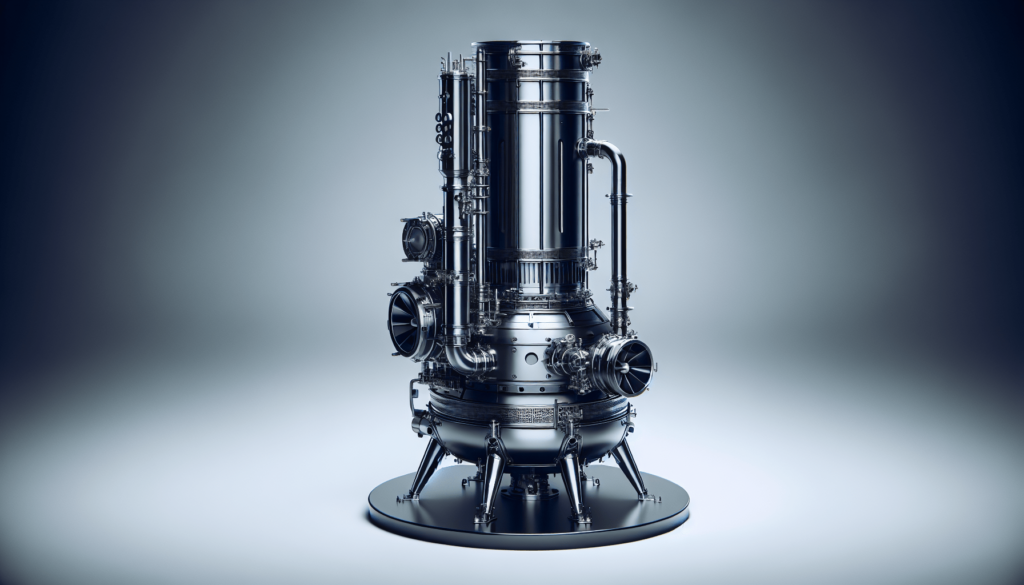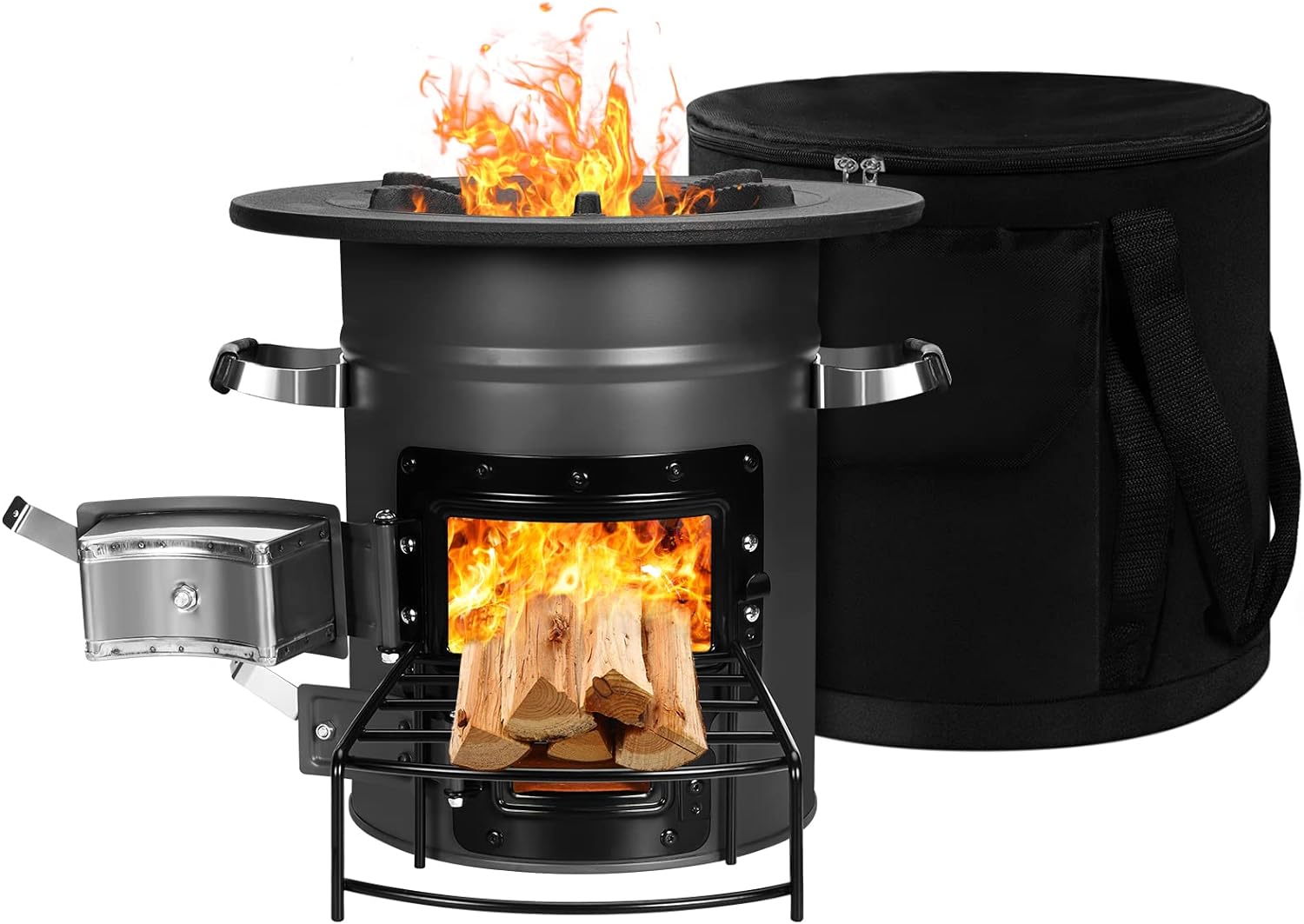Have you ever wondered how rocket stoves manage to be so efficient and environmentally friendly? It’s quite an intriguing subject, and understanding the mechanics behind these remarkable devices can lead you to some fascinating discoveries.
The Mechanics of Rocket Stoves: A Journey of Discovery
Rocket stoves have revolutionized the way people around the globe cook and heat their homes. Their ingenious design and function offer both high efficiency and low emissions. So, what exactly makes these stoves so special? Let’s explore the mechanical intricacies and the practical benefits of rocket stoves.
What Are Rocket Stoves?
Rocket stoves are highly efficient and versatile stoves designed for cooking and heating. They employ a specific design that allows them to burn wood or other biomass fuel more efficiently than traditional stoves.
The Basic Components
To get a clear picture of how a rocket stove operates, let’s first look at its fundamental components:
- Fuel Feeding Chamber: This is where you load the biomass fuel (sticks, twigs, or small branches).
- Burn Chamber: Here, the fuel combusts and generates heat.
- Heat Riser (Chimney): This vertical tube draws up hot gases from the burn chamber.
- Cook Surface/Heat Exchanger: This part captures the heat for cooking or heating purposes.
These components work in unison, making the rocket stove an efficient and effective cooking solution.
How Do Rocket Stoves Work?
The efficient functionality of rocket stoves lies in their unique design, which promotes optimal combustion and heat transfer.
The Process Explained
Here’s a step-by-step explanation of how a rocket stove typically operates:
- Fuel Introduction: You insert small pieces of wood or other biomass into the fuel feeding chamber. The design allows you to continually add fuel as needed.
- Combustion: Air flows into the fuel feeding chamber, supporting efficient combustion in the burn chamber. The horizontal fuel entrance ensures that air mixes thoroughly with the fuel.
- Heat Riser Function: The heat riser creates a strong draft by drawing hot gases upward. This not only pulls fresh air into the burn chamber but also ensures complete combustion.
- Heat Transfer: Finally, the heat produced is transferred to the cook surface or heat exchanger. This setup allows efficient energy use, making rocket stoves highly effective for their intended purpose.
The Science Behind Rocket Stoves
Rocket stoves leverage simple yet effective principles of thermodynamics and fluid dynamics to achieve high efficiency.
Thermodynamics In Action
Rocket stoves maximize heat transfer through several mechanisms:
- Convection: The heat riser facilitates the removal of hot gases, promoting efficient heat transfer.
- Radiation: The insulated nature of rocket stoves ensures that minimal heat is lost to the surroundings.
- Conduction: The cook surface or heat exchanger absorbs and retains heat efficiently.
Fluid Dynamics’ Role
Fluid dynamics govern how air and gases move through the stove:
- Draft Creation: The vertical heat riser acts like a chimney, creating a draft that draws in fresh air through the fuel chamber.
- Air Flow Optimization: By maximizing the mixing of air and fuel, rocket stoves ensure complete combustion, reducing the amount of unburned fuel.

Advantages of Rocket Stoves
Rocket stoves hold numerous advantages over traditional stoves and cooking methods.
Efficiency
Rocket stoves are designed to burn fuel more completely, extracting more energy from a given amount of fuel.
- Lower Fuel Consumption: Due to their efficiency, rocket stoves require less fuel, making them cost-effective.
- More Heat Output: They produce more heat per unit of fuel, ensuring quicker and more effective cooking or heating.
Environmental Benefits
The ecological impact of rocket stoves is significantly lower compared to traditional stoves.
- Reduced Smoke Emissions: They produce minimal smoke, leading to better air quality.
- Sustainable Fuel Use: Rocket stoves can run on small twigs and branches, promoting sustainable forestry practices.
Practical Benefits
Aside from their efficiency and environmental advantages, rocket stoves offer several practical benefits.
- Portability: Most rocket stoves are easy to transport, making them ideal for camping and emergency situations.
- Ease of Use: Their simplistic design means they are user-friendly and require minimal maintenance.
Applications of Rocket Stoves
Rocket stoves can be used in various settings and for different purposes, thanks to their versatile design.
Domestic Use
In many parts of the world, rocket stoves have become a mainstay in households.
- Cooking: They are ideal for tasks such as boiling, frying, and baking.
- Heating: Some designs are optimized for space heating, perfect for cold climates.
Community and Institutional Use
Rocket stoves also find applications in larger setups.
- Schools and Hospitals: They can be used for cooking large volumes of food in community kitchens.
- Relief Efforts: In disaster-stricken areas, their portability and efficiency make them valuable for relief and recovery operations.
Outdoor and Recreational Use
For outdoor enthusiasts, rocket stoves offer a reliable cooking solution.
- Camping: Lightweight designs are excellent for backcountry adventures.
- Picnics and Outdoor Cooking: They provide a dependable heat source for grilling and cooking outdoors.
Building Your Own Rocket Stove
Creating your own rocket stove can be an exciting and rewarding project. Here’s a general guide on how to build one:
Materials Needed
You will require some basic materials to construct a rocket stove:
- Metal cans (one large and two smaller cans)
- Insulating material (such as vermiculite or perlite)
- Metal pipes or tubing for the heat riser
- Metal cutting tools and safety equipment (gloves, goggles)
Construction Steps
Follow these steps to build a simple rocket stove:
- Prepare the Cans: Cut openings in the large can for the fuel feeding chamber and the heat riser.
- Insert the Heat Riser: Fit the metal tube or pipe vertically into the large can, making sure it is stable.
- Insulate the Stove: Fill the space between the large can and the heat riser with the insulating material.
- Add the Fuel Chamber: Insert one of the smaller cans horizontally into the cut opening for the fuel chamber.
- Assemble and Test: Ensure all components are securely in place, then test the stove with a small amount of fuel.
This basic model offers a simplified understanding of the rocket stove’s mechanics. As you become more familiar with the design, you can modify and improve it for better efficiency and functionality.

Common Myths about Rocket Stoves
There are several misconceptions about rocket stoves. Let’s address some of the most common ones:
Myth 1: Rocket Stoves Are Complex to Use
Contrary to this belief, rocket stoves are actually quite user-friendly. Once you get the hang of lighting and feeding them, they are straightforward and efficient to operate.
Myth 2: They Require Special Fuel
Another myth is that rocket stoves need specialized fuel. In reality, they can burn a variety of biomass fuels such as small twigs, branches, and even certain types of agricultural waste.
Myth 3: Limited to Primitive Cooking
While they are excellent for basic cooking needs, modern adaptations of rocket stoves can be used for a wide range of cooking techniques, from baking to grilling.
Advanced Rocket Stove Designs
As interest in rocket stoves has grown, so have the innovations and designs. Let’s explore some advanced configurations.
Rocket Mass Heaters
One of the most efficient designs are rocket mass heaters, which combine the principles of rocket stoves with thermal mass storage.
Key Features:
- Thermal Mass: They incorporate materials like cob or stone to store heat.
- Extended Heat: These heaters retain and slowly release heat, providing long-lasting warmth.
Rocket Ovens
Rocket ovens take the efficiency of rocket stoves into the realm of baking.
Key Features:
- Insulated Chambers: They have well-insulated baking chambers to maintain high temperatures.
- Versatility: Ideal for baking bread, pizzas, and other baked goods.
Innovations and Future Prospects
The future of rocket stoves looks promising as technological advancements continue to enhance their design and functionality.
Technological Innovations
Here are some ways in which technology is furthering rocket stoves:
- Improved Insulation Materials: New insulating materials are being developed to enhance heat retention.
- Compact Designs: Modern designs focus on making rocket stoves more compact and user-friendly.
Global Impact
Rocket stoves have the potential to make a significant global impact, particularly in developing countries.
- Health Benefits: By producing less smoke, they reduce respiratory issues caused by traditional cooking methods.
- Economic Benefits: Lower fuel consumption translates to cost savings for households and communities.
- Environmental Benefits: Their efficiency supports sustainable fuel usage and reduces deforestation.
Challenges and Solutions
While rocket stoves are highly beneficial, they do face certain challenges. Let’s look at these obstacles and possible solutions.
Common Challenges
- Material Durability: The high temperatures can cause wear and tear on materials.
- User Adoption: Educating people about their use and benefits can be challenging.
Potential Solutions
- Enhanced Materials: Developing more durable materials that can withstand high temperatures.
- Community Education: Initiatives to teach the benefits and use of rocket stoves in communities.
Real-World Examples and Case Studies
To understand the real-world effectiveness of rocket stoves, let’s consider a few case studies.
Case Study 1: Rural Kenya
In rural parts of Kenya, rocket stoves have been introduced to minimize wood consumption and deforestation. The results have been significant, with less time and money spent on fuel.
Case Study 2: Disaster Relief in Haiti
Following natural disasters in Haiti, rocket stoves have been used to provide efficient cooking solutions to displaced families, offering a reliable alternative to traditional cooking methods.
FAQs about Rocket Stoves
Let’s wrap up with some frequently asked questions about rocket stoves.
Q: Are rocket stoves safe to use indoors?
A: While they are efficient, it’s essential to have proper ventilation if you use them indoors to ensure safety.
Q: Can rocket stoves be used in all weather conditions?
A: Yes, they are versatile enough to be used in various weather conditions, but protecting them from extreme moisture can prolong their lifespan.
Q: How can I maintain my rocket stove?
A: Regularly check for any signs of wear and clean out ash buildup to keep it functioning efficiently.
Conclusion
By now, you have a thorough understanding of the mechanics and benefits of rocket stoves. Their simple yet effective design makes them a valuable tool for efficient cooking and heating, offering numerous advantages over traditional methods. Whether you’re interested in building your own or simply understanding the principles behind them, rocket stoves represent a fascinating blend of science and practicality that has the potential to make a significant impact globally. So, why not embark on your own journey of discovery and see how rocket stoves can transform your cooking and heating practices?



